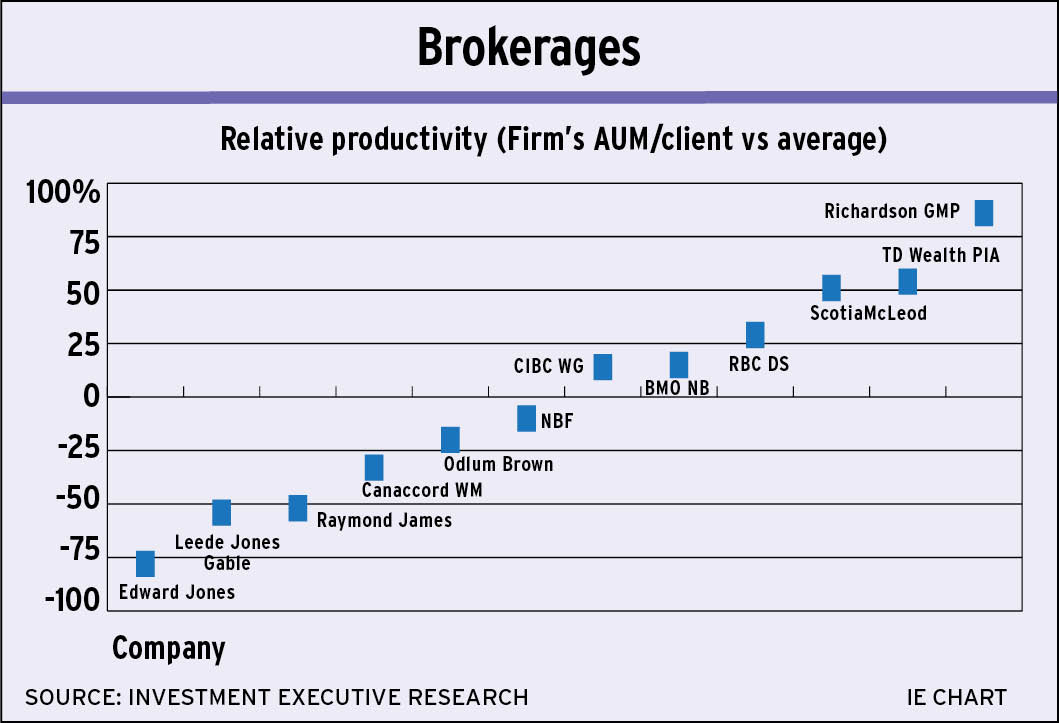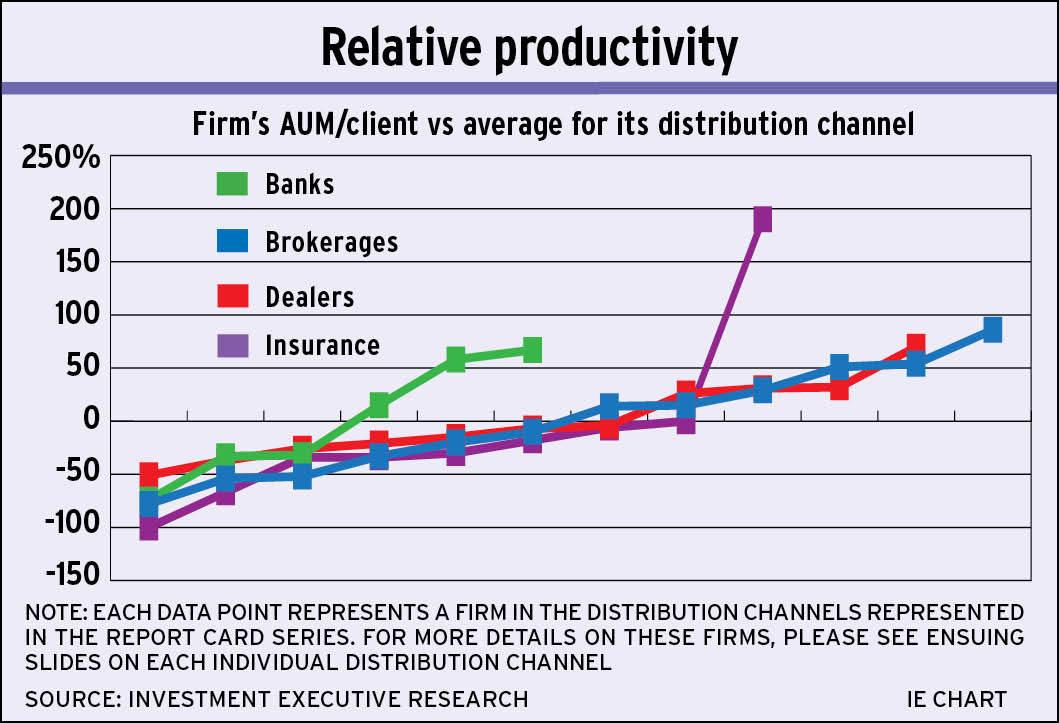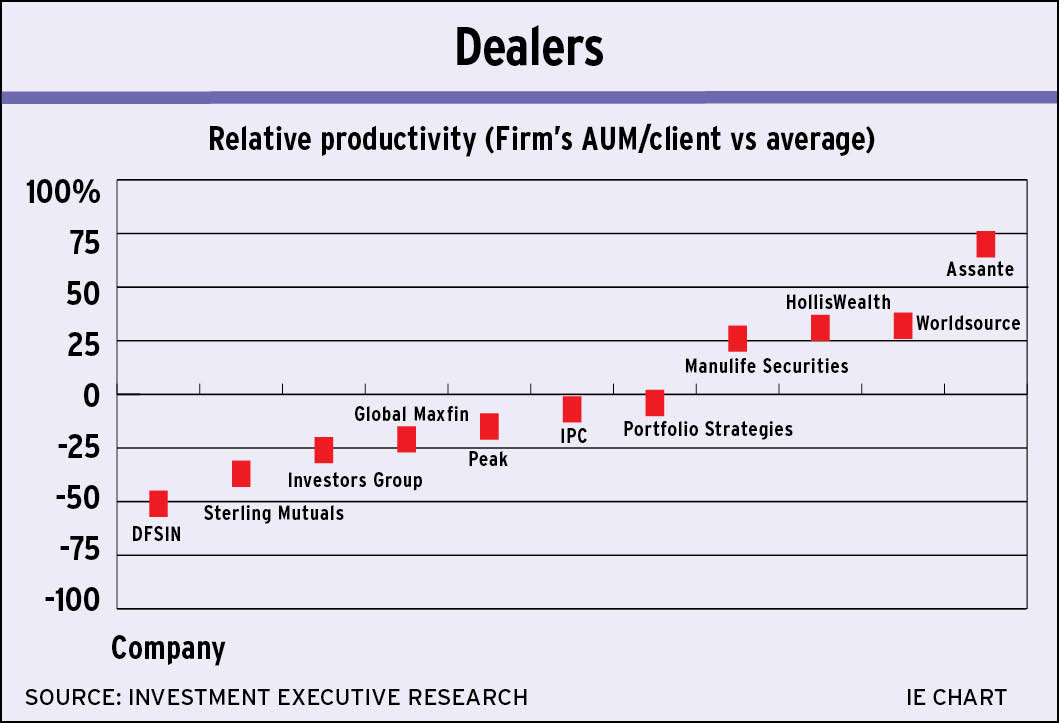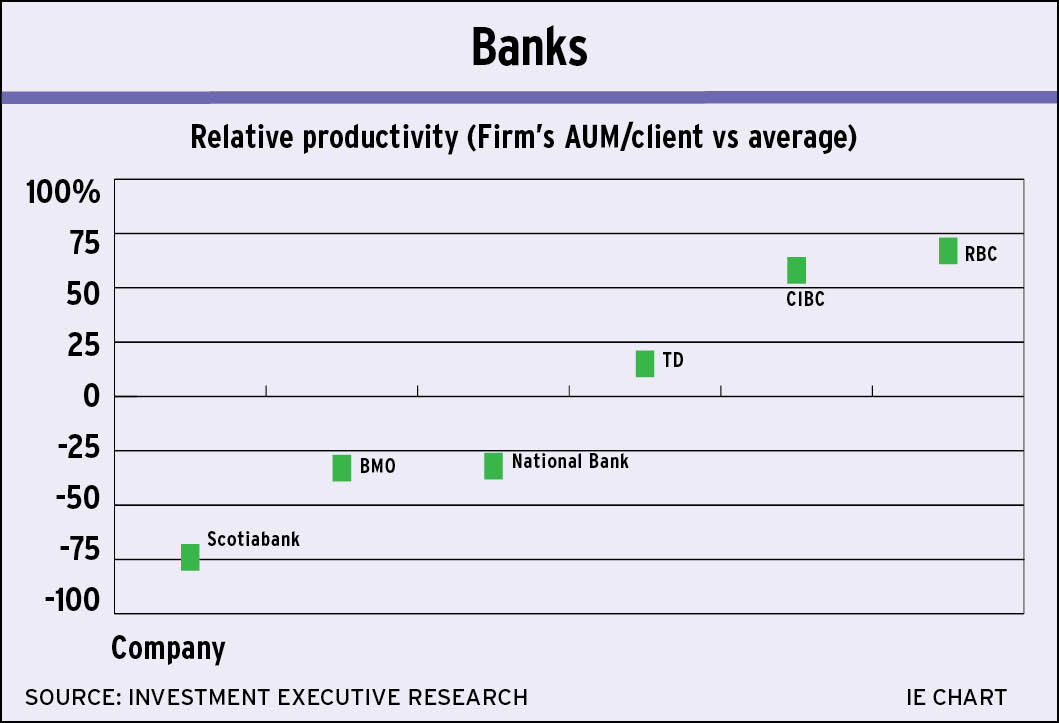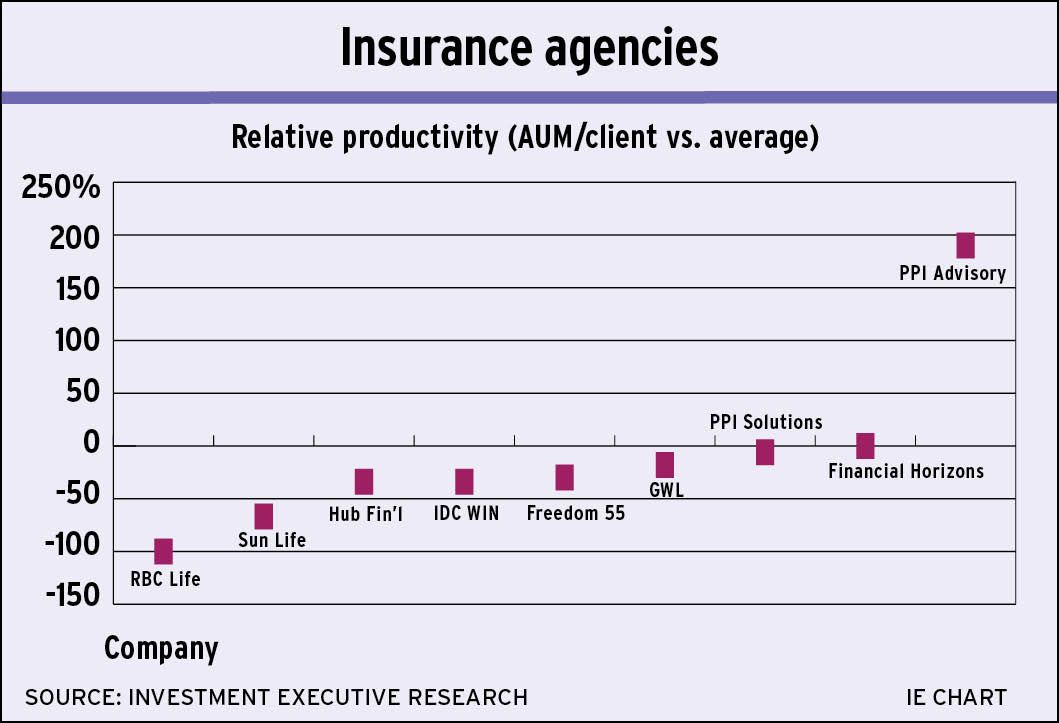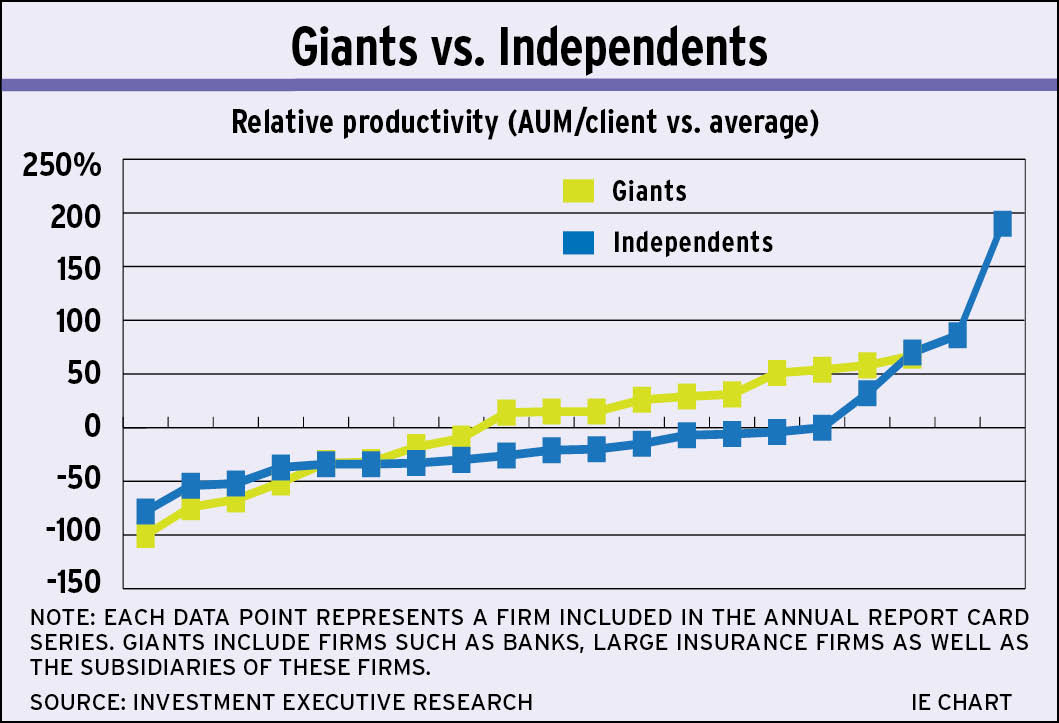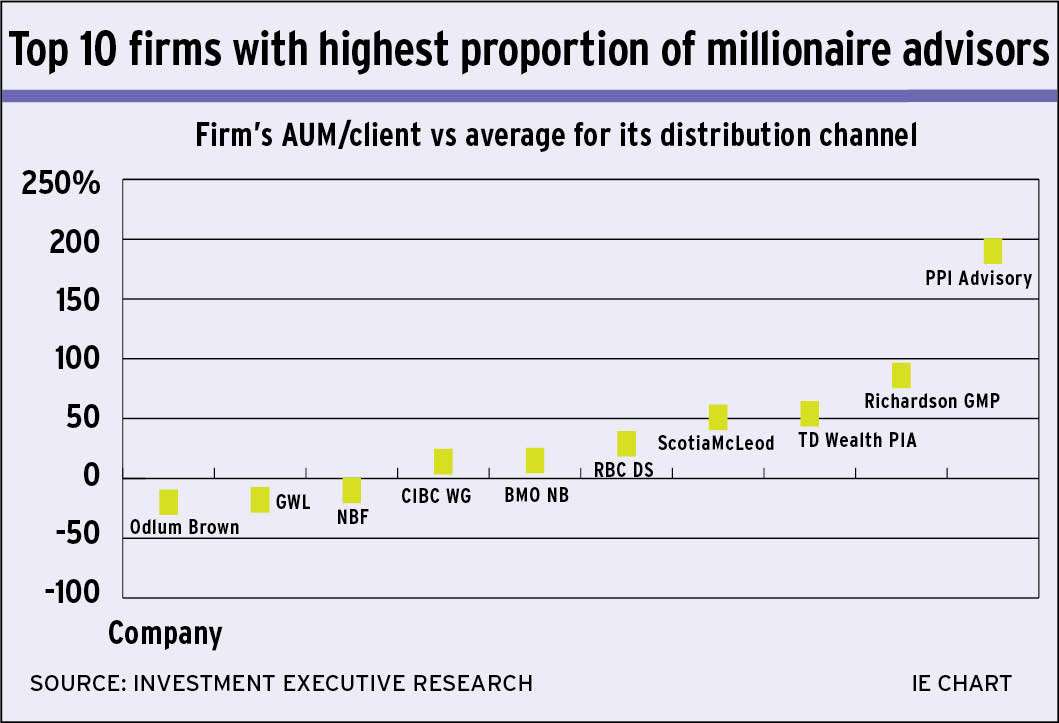
Financial advisors’ productivity is becoming ever more important as a performance metric as a result of intensifying competition and increasing client segmentation.
As such, Investment Executive‘s (IE) analysis of data gathered during this year’s Report Card series highlights the overall dominance of the large financial services institutions — including banks and life insurance giants — within the retail investment business in terms of relative productivity. At the same time, the analysis also reveals that productivity isn’t everything as the industry’s best-paid sales forces aren’t necessarily also the most productive.
The seven charts included in this slideshow detail the relative productivity of each firm surveyed in this year’s Report Card series. To calculate relative productivity, IE compares the average assets under management (AUM) per client for each firm with the average for that specific distribution channel. This means brokerages would be compared with brokerages, mutual fund and full-service dealers would be compared with fellow dealers, banks with banks, and insurance agencies with other insurance agencies.
Firms that appear above the 0% mark on the y-axis are more productive than average in their distribution channel while firms that fall below 0% on the y-axis have productivity that is below average. A firm that appears right around the 0% figure is more or less in line with its channel’s average productivity.
So, for example, if a brokerage firm has a relative productivity score of 20%, this means the firm is 20% more productive than the average for the brokerage channel. Similarly, an insurance agency with a relative productivity of -10% would be below the average by 10% compared with other firms in that channel.
